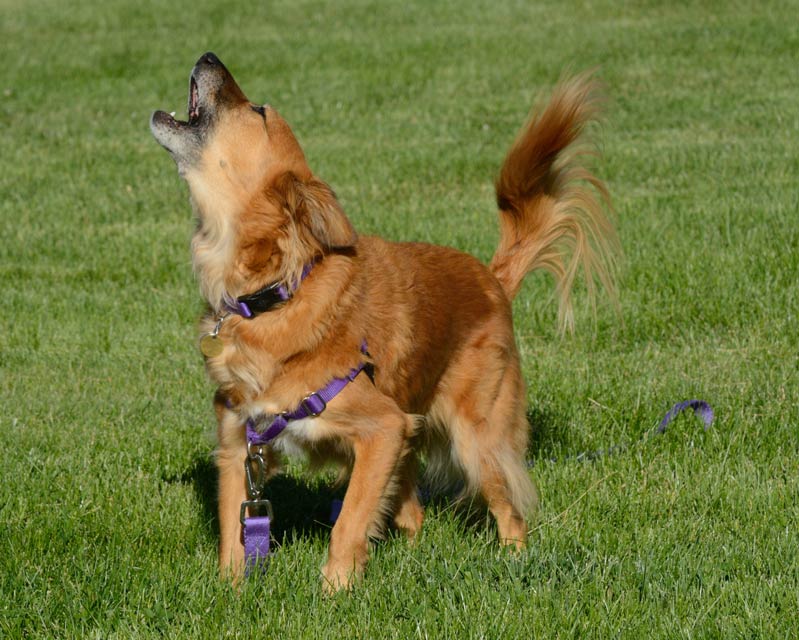How to Deal with Dog Barking

Does your dog bark when you don't want her to? It's a common issue for dog owners and is one of those things that can be hard to solve. After all, barking is normal for dogs. To them, it's just talking. Still, it's not appropriate in all situations when dogs live with humans.
Luckily, it is possible to teach your dog not to bark when you don't want her to. Here are some tips for specific situations.
Barking at the Doorbell
The doorbell or a knock at the door is an extremely common trigger for barking in dogs. The reason is conditioning. The dog has learned that a knock or ring at the door means someone is out there. That's exciting for your dog, who may wish to greet the newcomer. Protective dogs may also be trying to alert their human to a possible intruder.
If you want your dog to be quiet when the doorbell rings or someone knocks on the door, you will need to show her what you want her to do instead and reward her for it. That means you'll have to set up some specific training sessions to deal with the issue. If you try to train your dog when someone randomly knocks, you won't have control of the situation, and it will be quite tricky.
The first step is to have a friend or family member knock or ring the bell while you stand inside with your dog on a leash. When the person knocks, tell your dog to sit and reward her for doing so. Remember, only reward when she's paying attention to you and sits. If you'd like her to do something else, like go to her bed when the doorbell rings, guide her there and reward her for being calm.
This process might take some time, but you want to teach your dog that the door won't open and the new person won't come inside until the dog is quiet.
Barking in the Car
If your dog is constantly barking at things she sees outside when you're driving, you will want to curb that behavior. It's essential that your dog is quiet and contained in the car, for everyone's safety. The best situation for a dog that barks or jumps around in the vehicle is to keep her in a crate in the back of the car during trips. That way, she can't see things that might make her excited enough to bark. You can also spray the crate with Adaptil spray to help her stay calm.
If your dog is afraid of car rides or gets car sick, visit this article for information and tips: "Car Sickness in Dogs."
Barking on Walks
Does your dog do a lot of barking when you take her out for a walk? That's a common time for increased barking because there are many exciting sights, sounds, and smells to which your dog may wish to react. But it's one of the worst times for your dog to be barking a lot because it could annoy or frighten other dogs and people. It may also decrease the peace and tranquility you're hoping to achieve on your walk.
Once you have an idea of the types of things your dog barks at when you're on a walk, you can start to head it off at the pass. For instance, if she barks when another dog approaches, watch for other dogs in the distance. As soon as you see one, distract your dog by giving a command and rewarding her for responding and giving you her attention. For example, tell her to sit when you see a dog in the distance and reward her for doing so and staying quiet. Over time, your dog will learn that it's more rewarding to be quiet than to bark.
Barking in Greeting
Some dogs bark upon greeting someone, including their owner. This type of barking is meant to draw attention, and the best way to deter it is to teach the dog she gets attention only for being calm and not for barking.
When your dog barks for attention, turn away. Ignore the dog until she stops barking. Then, tell her to sit and reward her for doing so and staying quiet.
Teach the Quiet Command
One beneficial way to deal with dog barking due to any cause is to teach your dog the quiet command. That way, you can always have control of whether your dog barks.
To learn the quiet command, your dog must first learn the speak command. From there, you can have her speak, then tell her "quiet," and give her a treat quickly when she stops.
For step-by-step instructions on this, check out: "How to Teach Your Dog the Quiet Command."
For more information about dog barking and how to deter it, look at this article: "How Do You Stop a Dog from Barking?"
You May Also Like These Articles:
How to Teach Your Dog the Quiet Command
How Do You Stop a Dog from Barking?
Can Stress Affect Your Dog's Health?
Disclaimer: This website is not intended to replace professional consultation, diagnosis, or treatment by a licensed veterinarian. If you require any veterinary related advice, contact your veterinarian promptly. Information at DogHealth.com is exclusively of a general reference nature. Do not disregard veterinary advice or delay treatment as a result of accessing information at this site. Just Answer is an external service not affiliated with DogHealth.com.
Notice: Ask-a-Vet is an affiliated service for those who wish to speak with a veterinary professional about their pet's specific condition. Initially, a bot will ask questions to determine the general nature of your concern. Then, you will be transferred to a human. There is a charge for the service if you choose to connect to a veterinarian. Ask-a-Vet is not manned by the staff or owners of DogHealth.com, and the advice given should not delay or replace a visit to your veterinarian.



